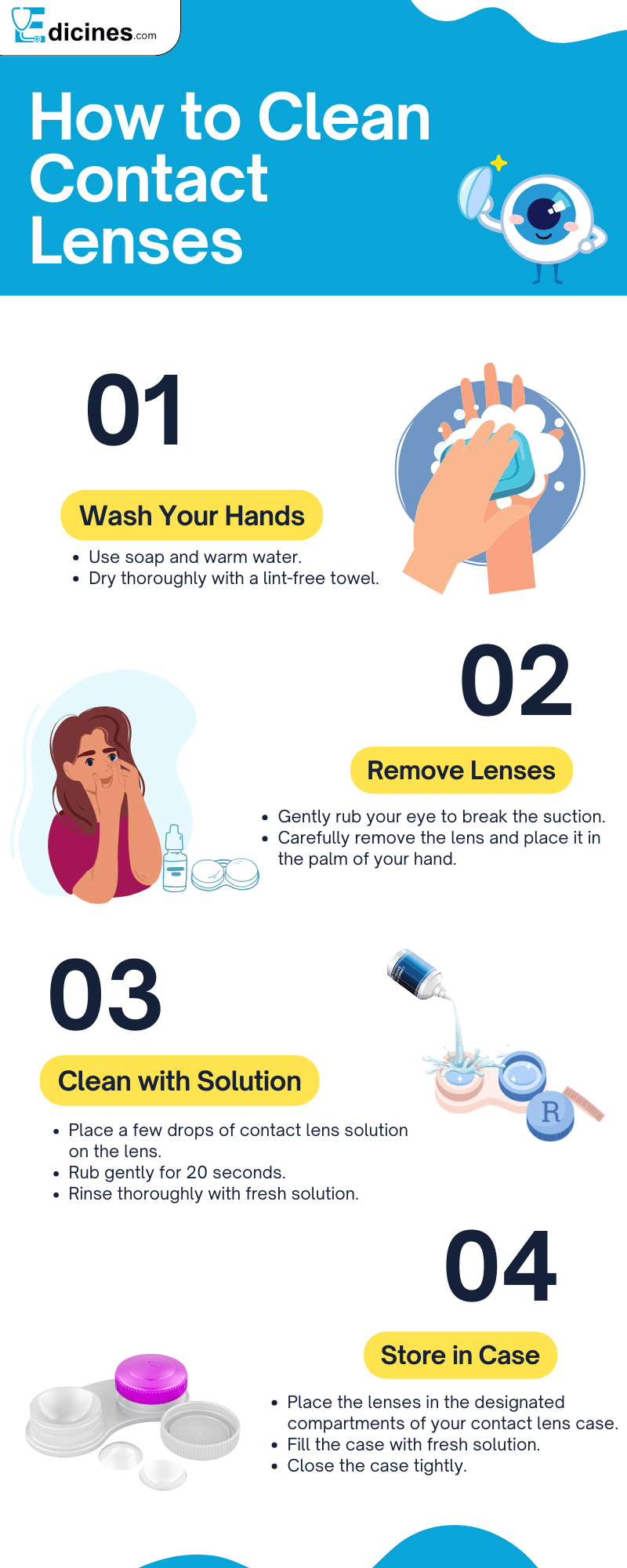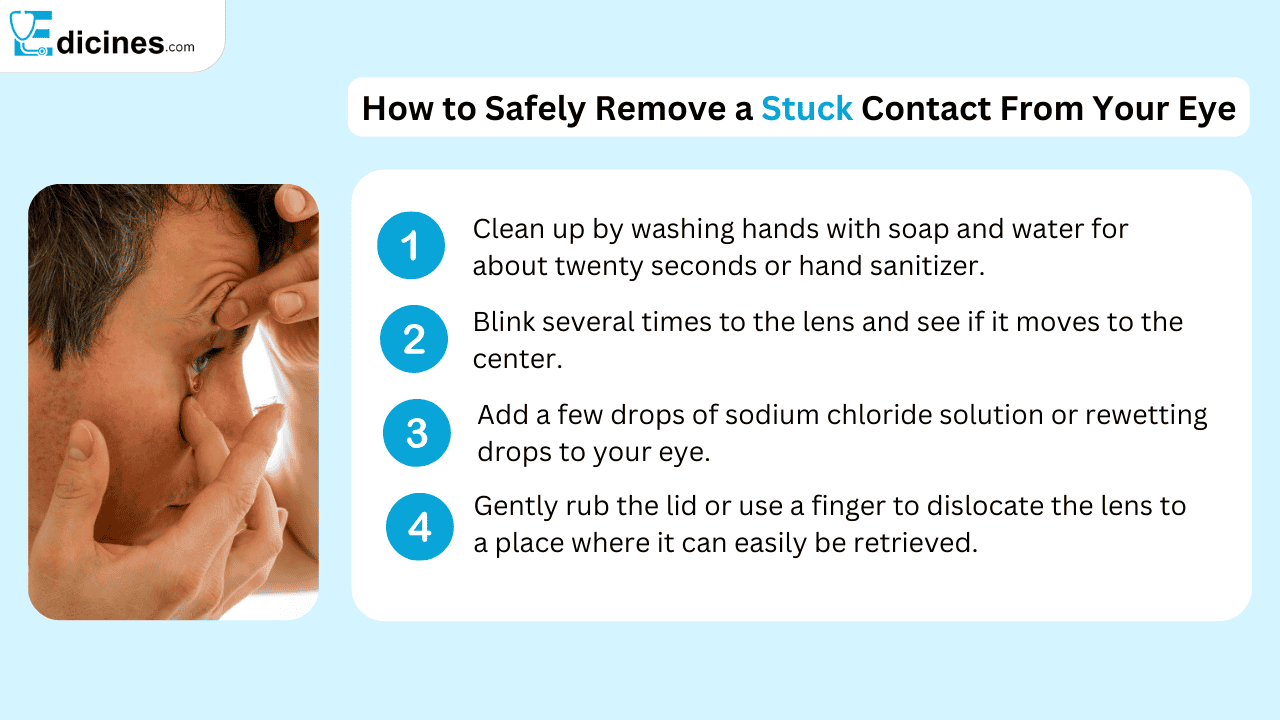When it comes to visual impairment and its prevention, eyeglasses tend to become an unattractive option for many people. Thanks to contact lenses that correct vision and at the same time offer flexibility. Nevertheless, the merit is coupled with a demerit of proper care.
Maintaining good hygiene in the use of contact lens is very important as it helps to avoid complications to the eyes. If the handling and disinfecting of the lenses is not carried out in time, it will be uncomfortable to wear the lenses and more harmful issues such as infections and impairment may lead.
Take for instance, extended wear of the lens, disregarded lens hygiene and inadequate lens care agents may lead to medical problems like discomfort in the eye, wounds in the cornea, inflammation of the conjunctiva and in rare cases, very aggressive infection. Later, complications are generally arising from lenses that are not cleaned and are infected with some harmful microorganism like bacteria or fungi.
How to Properly Clean and Disinfect Contact Lenses

Performing the cleaning routine on contact lenses is important to avoid any complications or irritation to the eyes. Below is a step by step guideline on how one can clean and disinfect properly.
Step 1: It is important to wash hands using soap and Water and dry them well before touching the lenses.
Step 2: It is necessary to take out the contact lens and hold it in the hand.
Step 3: Pour lens solution onto the lens to wet its surface.
Step 4: Using one’s fingertip, the lens is rubbed on both sides for about twenty seconds.
Step 5: Before placing the lens in the case, rinse it with fresh solution.
Step 6: Recommended solution is used to fill the lens case and the lenses are kept for overnight or as prescribed.
Daily, Weekly, and Monthly Cleaning Rituals
Daily Cleaning: Most soft lenses ought to be cleaned and disinfected daily lest they become contaminated with micro organism.
Weekly Cleaning: In addition, in some cases hard lenses cleaning is recommended to prevent protein build up and weekly enzymatic cleaning is employed.
Monthly Maintenance: Monthly disposable lenses should be replaced after 30 days, even if they still feel comfortable.
Using the Right Products
Use only cleaning lids or inserts intended for your particular lens type. Tubewater, spit, and any other liquid are not to be used because they can be harmful.
Cleaning, disinfecting, and storing lenses can all be accomplished through use of an all-in-one solution or as directed, use specific cleaning solutions as per instructions from eye safety specialist.
Best Contact Lens Solutions for Sensitive Eyes
Sensitive eyes require a gentle contact lens solution. Here are some highly recommended options for your comfort:
Hydrogen Peroxide Solutions:
- Preservative-free
- Deep cleansing
Saline Solutions:
- Gentle rinsing
Multipurpose Solutions for Sensitive Eyes:
- Gentle formulation
Remember, individual comfort may vary. Consult with your eye care professional to determine the best solution for your specific needs.
This version provides a concise overview of the three main types of contact lens solutions for sensitive eyes, highlighting their key benefits. It also emphasizes the importance of consulting with an eye care professional for personalized advice.
Choosing the Right Solution
It is important to consult with your eye care professional for advice on an appropriate solution. Also do not make changes to the solutions frequently because this may cause discomfort or irritation. In addition to this make sure products that are at their expiry date are not used, as the cleaning or disinfecting of the eye lenses may not be effective due to old solutions.
How to Prevent Contact Lens Infections
Contact lens infections can range from mild discomfort to severe conditions requiring medical attention. To prevent this from happening to you, consider the practical measures given below to minimize the chances of getting an infection:
Clean Hands: Always wash your hands before handling your lenses.
Use Fresh Solution: Discard the old solution. Always pour out the solution in the lens container, refill it with new solution after every use.
Storage: Lenses should be kept in a disinfected and clean case and the casing changed after some time.
Avoid Water Exposure: Do not engage in any activity that will expose your lenses to water e.g. swimming or showering as water may contain harmful microorganisms.
Follow Replacement Schedules: For contact lens wearers, please adhere to the replacement schedule recommended by your optician, and do not exceed the time for wearing lenses prescribed.
In addition, it is important to have regular examinations for lenses as these also help in curtailing the chances of infective agents. During these visits, the physician is also able to detect other possible sources of infection at an early stage and advise on necessary modifications in care of the lenses.
What to Do If a Contact Lens Gets Stuck in Your Eye

If due to some reason a contact lens gets stuck in the eye, here are some precautions to be followed.
The idea of a contact lens stuck in the eye seems dreadful but one shouldn’t worry as that makes the situation worse. To this effect, any of the following steps can be taken with the aim of removing the lens:
Step 1: Clean up by washing hands with soap and water for about twenty seconds or hand sanitizer.
Step 2: Blink several times to the lens and see if it moves to the center.
Step 3: Put a few drops of sodium chloride or rewetting drops in the eye.
Step 4: Gently rub the lid or use a finger to dislocate the lens to a place where it can easily be retrieved.
What not to do:
How to Take out a Contact Lens Stuck in Eye Twiz and the Fingernails are shaped better heels fit odder best footwear.
In the event that more than a few of this swings has been exhausted without the lens coming out, some medical attention from the ophthalmologist is required.
To prevent this from happening, ensure that they are all clean, wet, and in the right position before attempting to stick any of this into your eye.
Also Read: Essential Guide to Children’s Eye Health: Tips for Care and Early Detection
When to Change your Contact Lenses
Prolonged usage of contact lenses could put one at a risk of eye infections, cause irritation, and worse, inflict irreversible consequences on the eye. Therefore, it is of great importance to take the replacement schedule with great seriousness considering the category of contact lenses worn.
Disposable lenses: This type of lens must be thrown away after one-day use.
Two-week or one-week lenses: It is necessary to change lenses of this kind every other week or every week correspondingly.
30-day lenses: These among many types of contact lens need to be disposed of after one month usage.
If one does not comply with the replacement schedule, several issues arise, such as reduced lens effectiveness, decreased oxygen to the eye, and increased risk of infection.
For the best interests of your eyes always observe the replacement schedule proposed by your eye care.
Conclusion
Taking proper care of contact lenses is imperative in maintaining one’s eyes free from infections. The regular cleaning and disinfecting process coupled with the right supplies and adherence to the replacement schedules will go a long way in making sure your lenses are safe and comfortable for use. Never overlook the value of visiting the eye doctor for check-ups to prevent any potential problems in the future.
You can wear your contact lenses with clear vision, comfort and still stick to healthy practices by observing the above mentioned precautions and lens hygiene practices.
Also Read: Dry Eye Syndrome Explained: Relief, Remedies, and Treatment Options













